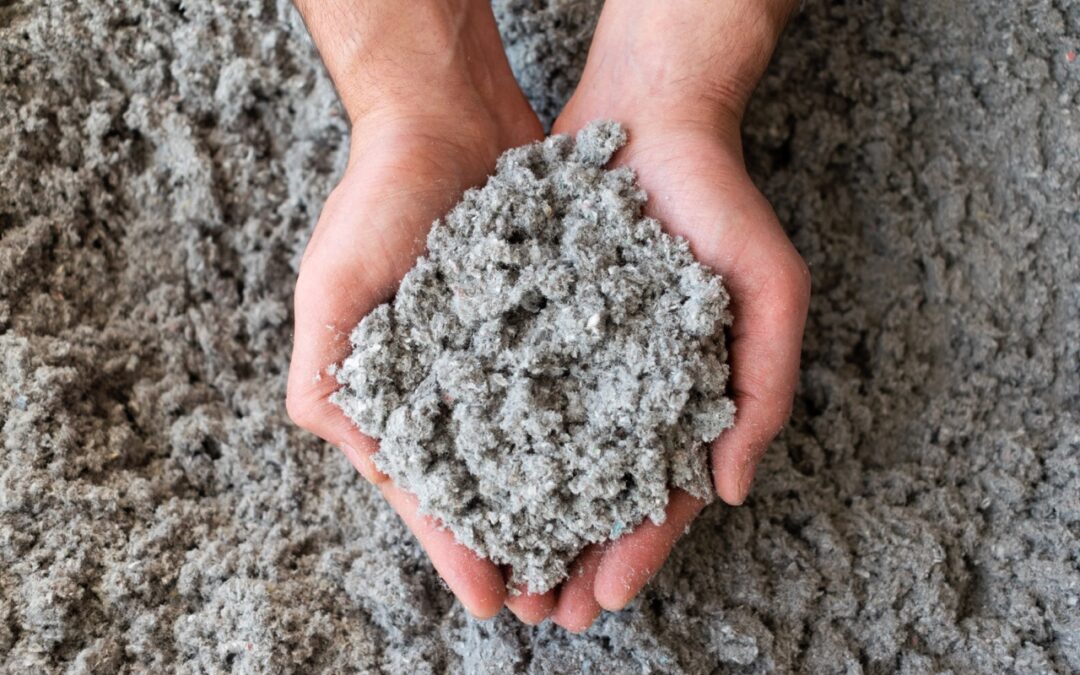If you live in Nevada and are renovating your home or business, you may be wondering what to do with all that old insulation stuffed in the walls or ceilings. Can it be recycled? Can it be reused? Read on to find out!
Most Common Types of Insulation
Recycling insulation is an opportunity to reduce waste and conserve energy. There are numerous types of insulation, including:
- Cellulose – Made from recycled paper products
- Fiberglass Made of fine glass fibers
- Foam – Made using either polystyrene, polyurethane, or polyisocyanurate (plastics)
- Mineral wool – Slag or rock wool
Types of Insulation that CAN Be Recycled
Only some types of insulation can be recycled and the project should be handled by professionals. Insulation isn’t something you can just toss in a dumpster with everything else and hope for the best. It should be identified as a recyclable material so it can undergo the right process for future reuse.
Recycling the following insulation materials can involve a mechanical-based process that separates foils, plastics, dust, and dirt from the insulation fibers. Some insulation may also require chemical processes that modify the raw material for reuse applications.
- Fiberglass
- Mineral wool
Types of Insulation That CAN NOT Be Recycled
Unfortunately, some insulation materials can’t be recycled, and including them in a load of potentially recyclable materials can contaminate everything.
- Cellulose
- Foam
By recycling insulation materials responsibly and efficiently, we can help to reduce carbon emissions and sustain our planet’s resources. Furthermore, this can lead to improved sustainability in both our homes and businesses which will benefit many generations to come.
Types of Insulation That Can Be Reused
When removing insulation, there are certain types of insulation that can be reused after being taken out. Cellulose and mineral wool insulation both have the potential to be reused, depending on the condition it is in when it is removed.
Generally speaking, if the material has not been exposed to moisture or contaminants, like mold or mildew, then it may be possible to reuse this type of insulation. However, if any of these conditions are present or the integrity of the material has been compromised in some way by age and wear and tear, then it should not be used.
Additionally, keep in mind that some types of insulation may be better suited for some purposes over others. Some types of insulation may not be able to offer the necessary thermal performance to be reused. It’s best to consult a professional before reusing insulation as they will have knowledge of the type and quality of material needed for a particular space or job.
How to Properly Dispose of Insulation
Properly disposing of insulation is essential to protect human health and the environment. Most insulation materials are either combustible or can off-gas harmful chemicals, which can have major negative impacts if not handled with care.
To ensure the safe disposal of insulation, first consult your local government recycling guidelines. Each governing body may require that certain types of insulation be disposed of in certain ways. In general, it’s best to check with a local building material recycling center to see what they accept, as facilities differ widely in terms of accepted materials. Some centers may also offer hauling services if needed. It’s worthwhile to check with other resources as well – such as the EPA website and neighborhood waste management agencies – for more information on legally compliant disposal methods and potential use or disposal options.
Typically, you can place old cellulose and fiberglass insulation in bags in your curbside waste bins. But, don’t forget to wear protective gear if you plan on handling old insulation yourself!
Alternative Insulation Materials
Recent developments in alternative insulation materials have provided a more efficient and cost-effective way to keep warm, cool, and comfortable in any structure or building. Materials such as cellular glass, corkboard, and spray foam provide high-grade insulation with low toxicity levels. Not only are they more resistant to heat loss and air infiltration than traditional materials, but their relative ease of installation can help reduce planning costs. Other alternative insulation materials include:
- Natural fibers – Cotton, hemp, sheep wool, straw
- Denim – Recycled jean products
In addition to these advantages, alternative insulation materials use fewer raw pollutants during production which further reduces their impact on the environment. With all these benefits, it is no wonder that architects and engineers alike are increasingly opting for this new generation of insulation.
If you have questions about what type of insulation we accept in our Western Elite dumpsters, feel free to contact us today.






